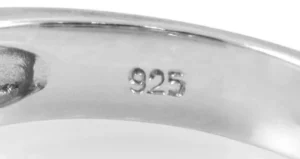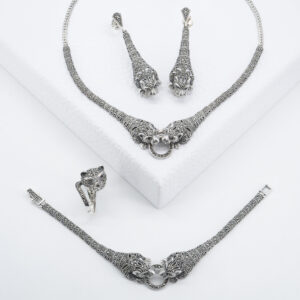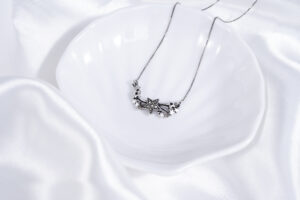When shopping for silver jewelry, especially necklaces, you might notice the term “925 silver” stamped on the piece. This number is more than just a mark—it’s a guarantee of authenticity and quality. But what exactly does it mean, and why should you care? This article explains the meaning of a 925 silver necklace, its benefits, and why it’s a trusted choice for buyers around the world. 925

What Does 925 Silver Mean?
The term “925 silver” refers to sterling silver, which is composed of 92.5% pure silver and 7.5% other metals, typically copper. Pure silver (also known as fine silver) is too soft for everyday wear, so it is combined with other metals to create a more durable and wearable alloy. The “925” stamp is an industry standard that assures buyers they are getting genuine sterling silver.
Why 925 Silver Is Ideal for Necklaces
- Durability: The added metals make 925 silver strong enough to resist bending or scratching under normal use. This is crucial for necklaces, which are worn often and subject to movement and friction.
- Appearance: Sterling silver retains the brilliant shine and elegance of pure silver while holding its form better. It works beautifully in both minimalist and elaborate necklace designs.
- Affordability: Compared to white gold or platinum, 925 silver is more accessible in price while offering a luxurious appearance.
- Hypoallergenic Qualities: Most 925 silver jewelry is nickel-free, making it a safe choice for individuals with sensitive skin.
- Versatility: 925 silver complements various fashion styles—whether you’re dressing up for a formal event or keeping things casual.
Common Styles of 925 Silver Necklaces
- Chain Necklaces: From box chains to snake and rope chains, sterling silver chains can stand alone or pair with a pendant.
- Pendant Necklaces: Many 925 silver necklaces feature pendants with symbols, initials, or gemstones.
- Layered Necklaces: Lightweight sterling silver chains are perfect for stacking and creating stylish layers.
How to Verify If It’s Real 925 Silver
Not all silver-looking necklaces are created equal. Some may be silver-plated or made of cheaper alloys. Here are a few ways to confirm you’re getting authentic 925 silver:
- Look for the Stamp: Genuine sterling silver should have a small stamp reading “925,” “.925,” or “S925.”
- Magnet Test: Silver is not magnetic. If a necklace is strongly attracted to a magnet, it’s likely not real silver.
- Rub Test: Gently rub the necklace with a soft white cloth. Real 925 silver may leave a slight black mark due to oxidation.
- Acid Testing: A jeweler can perform an acid test to verify the silver content.
How to Care for Your 925 Silver Necklace
- Avoid Moisture: Take off your necklace before swimming or showering to prevent tarnish.
- Store Properly: Keep in a dry, airtight container or anti-tarnish bag.
- Clean Regularly: Use a silver polishing cloth or mild soap and water to maintain its shine.
Why It Matters
Choosing a 925 silver necklace isn’t just about style—it’s also about making a smart investment in quality. The hallmark of 925 ensures that your jewelry is made from durable, beautiful sterling silver that will stand the test of time. Whether you’re buying for yourself or as a gift, a 925 silver necklace combines elegance, affordability, and trust.
A 925 silver necklace is more than a fashion accessory—it’s a reliable and meaningful addition to your jewelry collection. Its blend of beauty, strength, and value makes it a favorite across generations. The next time you shop for silver jewelry, look for that “925” mark—it’s a symbol of authenticity you can count on.


